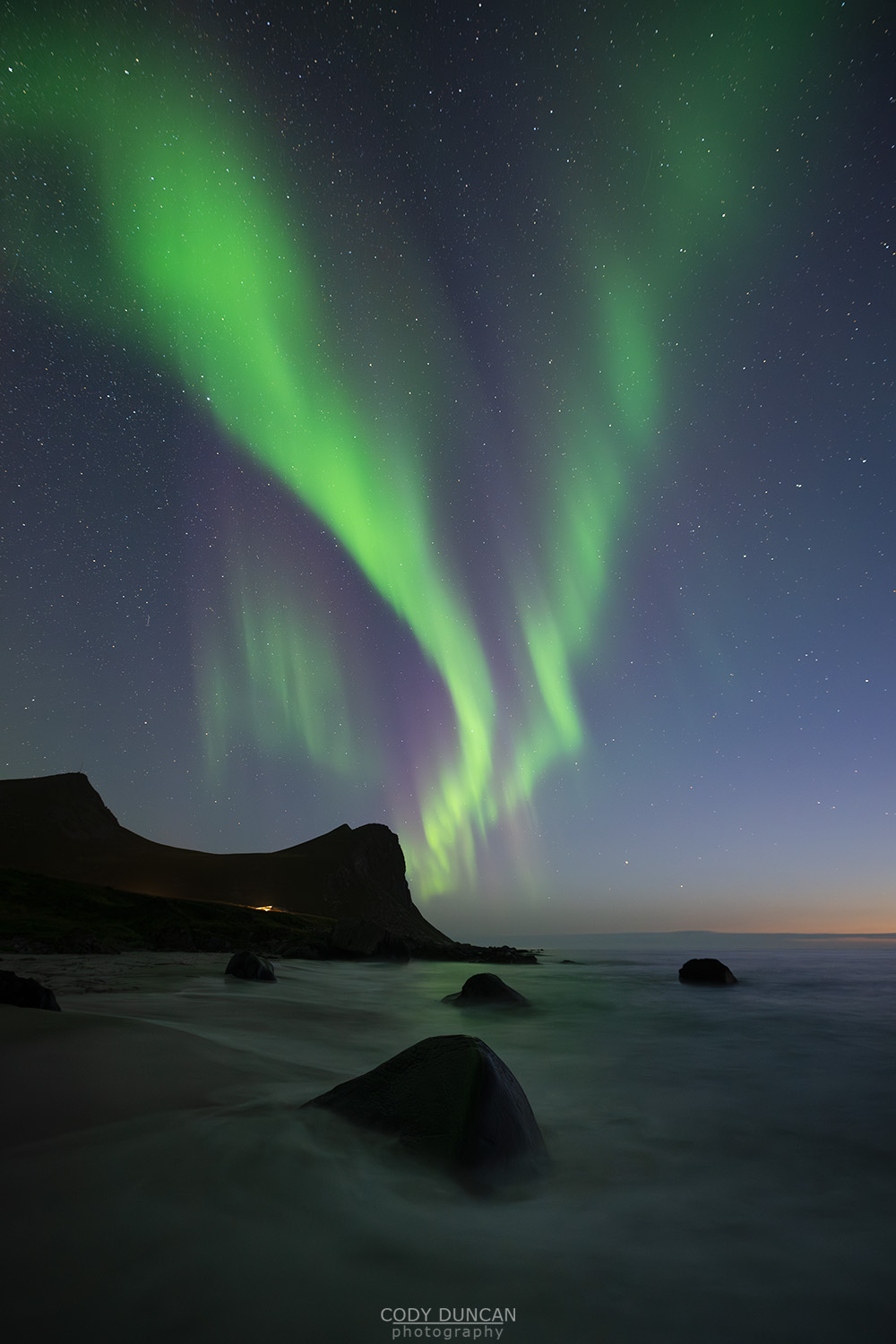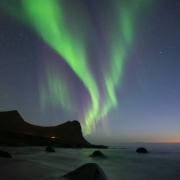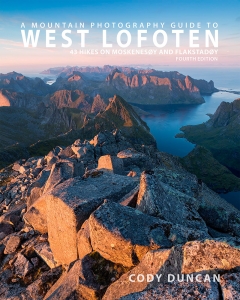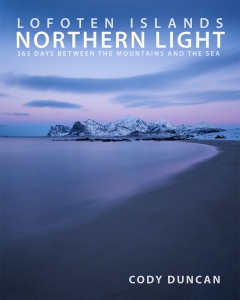Friday Photo #659 – Aurora Season

Photo: September northern lights – aurora borealis rise into sky over Myrland beach, Flakstadøy, Lofoten Islands, Norway. September 2, 2024. 00:41
I had been hoping this week’s photo would be of my first northern lights of the season. After weeks of rain and cloudy skies, some clear skies were finally in the forecast last night and so I was optimistic for an early season aurora photo. But as the sky darkened near midnight, it was aided by a giant cloud that seemed to sit over my valley until after 01:00. I could see elsewhere on Lofoten some northern lights were spotted, but it wouldn’t be so for me. And with rain returning this afternoon and throughout the weekend, it will probably be some days before I spot my first green in the sky.
And so, this week’s image is my first aurora from last year, taken on the early morning hours of September 2. This is actually somewhat late for my first aurora of the season, but last year was a rainy autumn as well, which this year seems on track to repeat, unfortunately.
And realistically, while the northern lights become visible from Lofoten starting around August 16/17 at the earliest, the sky is still too bright for much photography and the aurora will mostly only be visible higher in the sky. By the first days of September though, the northern horizon has faded into a deep amber glow with sufficient darkness for the aurora to be visible from the horizon.
It might not be something people think about, but early season auroras actually become visible further south at first – assuming sufficient solar activity, and work their way north. This is because, at the moment, the sky is simply darker at 65˚N than 68˚N. The further north sky won’t pass the darkness of the southern sky until the autumnal equinox, at which point the high north becomes darker, eventually reaching the polar night north of the Arctic Circle.
For example, The Lofoten Islands, at 68˚N have a slightly longer aurora season than Tromsø which is at 69˚N. Tromsø’s sky stays brighter longer in the late summer, and gets brighter earlier in the early spring.
Camera Info:
Nikon Z8
Sigma 14mm f/1.8
14mm
ISO 2000
f2
6 Seconds
WB Daylight






Leave a Reply
Want to join the discussion?Feel free to contribute!